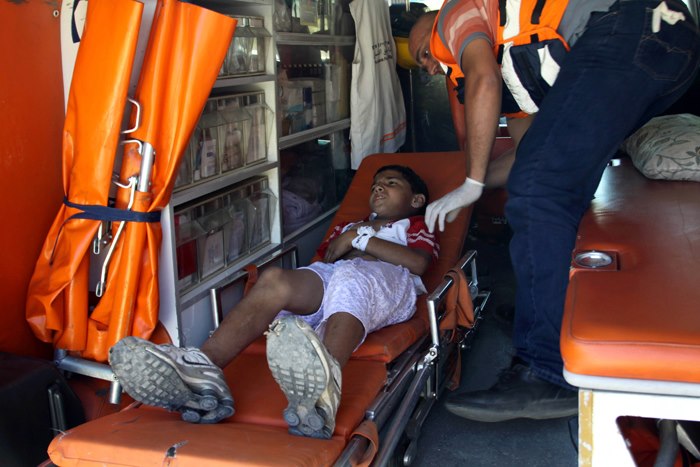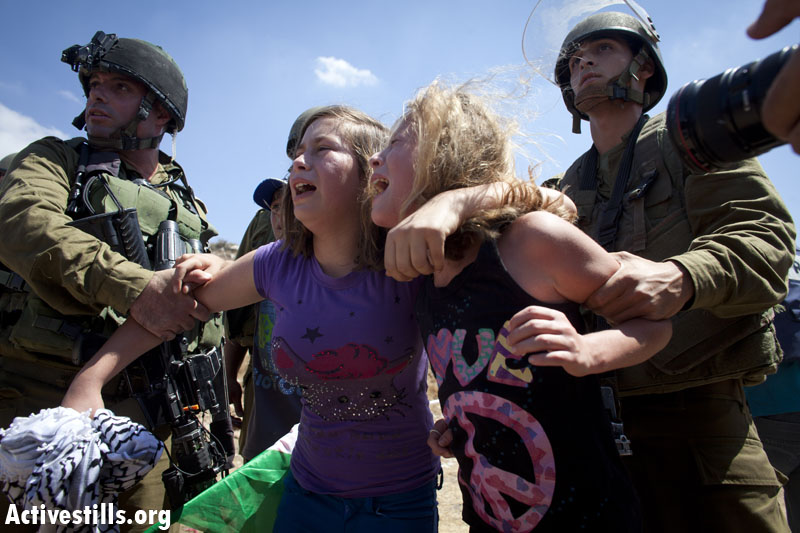Tag: Settlers
-
Live ammunition in Nabi Saleh
By Paddy Clark 31 August 2012 | International Solidarity Movement, West bank Three Palestinians were injured and 5 arrested today during Nabi Saleh’s weekly demonstration. Israeli military set up road blocks surrounding the village early this morning in order to prevent people and journalists from participating. At 4.30 p.m., Malek Tamini was shot with a live bullet…
-
Palestinian family members attacked, then arrested in khan Al Luban
By Marshall Pinkerton 29 August | International Solidarity Movement On the morning of August 28, around 30 settlers armed with guns and sticks descended upon a Palestinian home located in Khan al-Liban, and attacked the Daraghmah family. The mother, Taghrid, and the two youngest sons, Mu’min, 13, and Nour al-Deen, 9, were injured during the…
-
Video: Soldiers attack children in Nabi Saleh and forcibly separate them from their detained mother
August 25 2012 | Popular Struggle Coordination Committee, Occupied Palestine Army held six detainees over eight hours, raided houses in the village, injuring several residents and using live ammunition Pictures: see here, here, here, and here During the weekly demonstration in the village of Nabi Saleh, yesterday, Friday, dedicated to support the Palestinian prisoners in Israeli jails, some of the…


